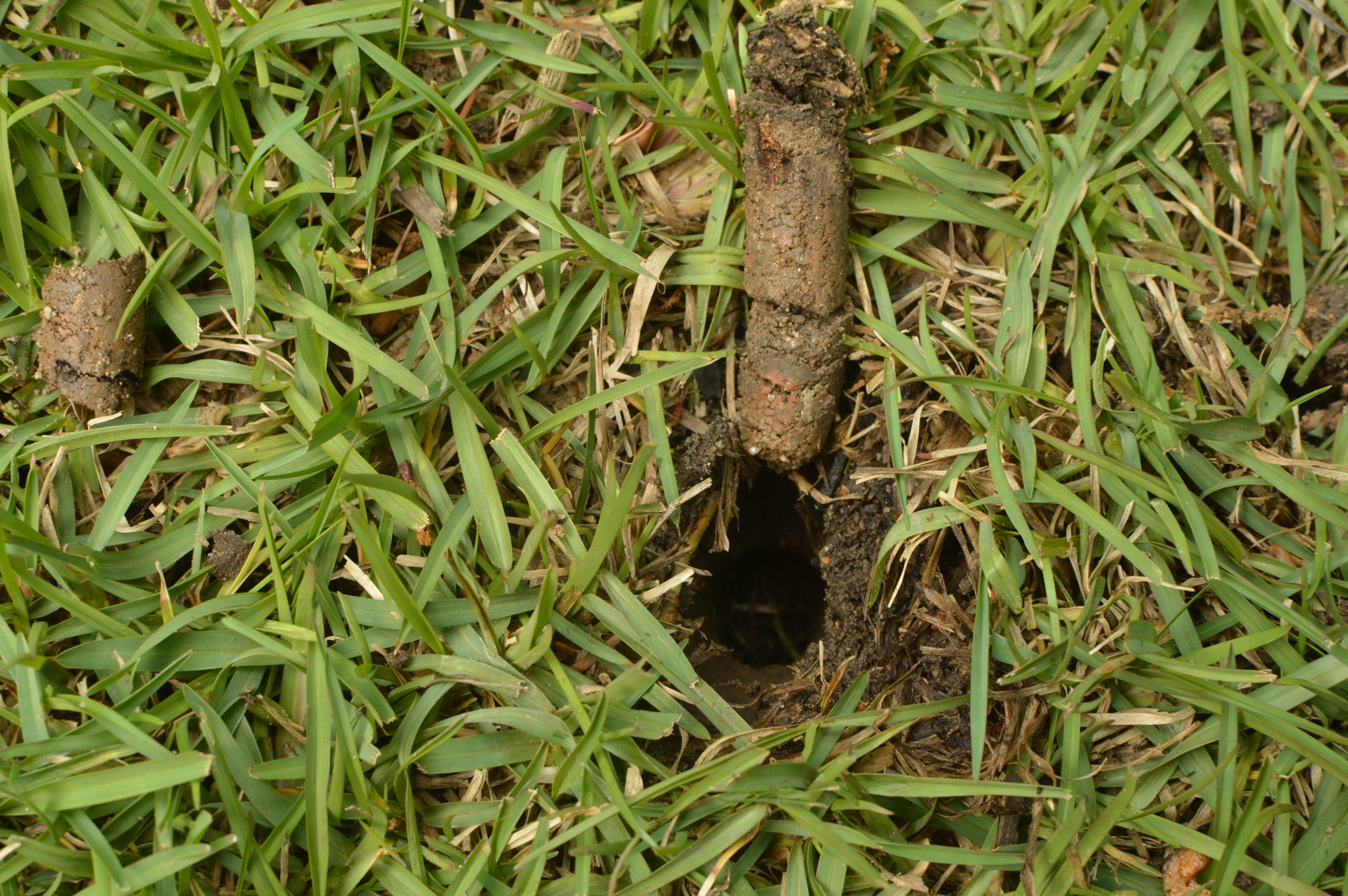Aeration and Overseeding
Aeration
Have you ever wondered why lawns need aeration? You walk by a yard and notice that there are clumps of soil laying all over the yard. You don’t understand what it is or what the benefit of doing aeration may be.
Aeration is the process of removing clumps (or plugs) of soil that have become compacted. Compacted soil has a reduced rate of water infiltration and drainage. Soil becomes compacted by heavy yard usage by equipment, people, and animals. The purpose of aeration is to promote root growth by allowing water, air, and nutrients to penetrate deeper into the soil.
Benefits of Aeration
- Promote root expansion for grass growth
- Increase the health of the soil
- Allows rainwater and irrigation to disperse into the soil and not puddle
- Allows grass seed to get to the root
- Limits thatch buildup (thatch is a combination of turfgrass stems and roots at the base of the grass)
Overseeding
Overseeding is the process of spreading grass seed over your existing lawn to thicken areas that are thin and give your lawn a refresh with new grass. There are different types of grass seed so be sure to use the same seed as your current grass.
Steps for overseeding
- Cut your grass shorter than normal and remove all the grass clippings so the seeds are in direct contact with the soil.
- Rake the yard to loosen the soil and remove any other objects that may interfere with seed contact.
- Add seeds with a seed spreader.
- More about fertilizers.
- Water each morning. Cut back on water if there are puddles. Overwatering is as bad as underwatering.
When and how often to aerate and overseed?
In the Midwest, the best time to aerate and overseed is in the fall because the soil temperature is ideal for germination. Weeds have begun dying by this time. The ideal soil temperature for cool-season grass is between 50 and 60 degrees. See here for a soil temperature map. Yards should be aerated and overseeded once per year, however, if there are heavy compact issues and thatch issues, it can be done twice per year-once in spring and once in fall.
Equipment for aeration and overseeding
There are manually operated tools and electric tools used for aeration. Two manual tools used are plug aerators and spike lawn aerators. The plug aerators go deeper into the ground but do not cover as much area as the spike lawn aerators. Commercial power aerators are the preferred method for large areas but are more costly than manual tools. For overseeding, you will need a rake and a seed spreader.
Using a professional for aeration and overseeding
A professional will know what type of grass you have, what you need to enhance your soil, and what is needed for the climate. A professional has the equipment and tools to do the job properly. Your yard may not need aeration and overseeding as there may be other factors that are causing the problem. It boils down to knowledge, time, and resources.
To read our other blogs visit https://hopegrows.us/blog/
More resources on the above topics:
https://www.bobvila.com/articles/types-of-fertilizer/
http://ipm.ucanr.edu/TOOLS/TURF/SITEPREP/amenfert.html#amend

